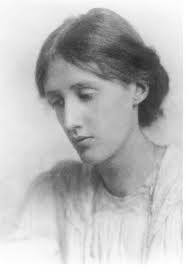
As I spend most of my time in the kitchen these days. I find I listen to a heck of a lot of radio (and have less time for blog posts!). This morning, a programme called ‘In Our Time’ presented by the broadcasting legend Melvyn Bragg, was on BBC Radio 4 which discussed the 1925 novel Mrs Dalloway by Virginia Woolf. Here’s a link to that very episode.
I happen to know that was as good a bread-maker as she was a novelist.
She used an oil cooker, called the Florence, and with it tutored her maid and cook to bake cottage loaves (a loaf I have never attempted as it appears to be of difficulty 10). Her cook, called Louise Mayer, recounts in the book Recollections of Virginia Woolf:
She liked trying to cook…but I always felt that she did not want to give time to cooking and referred to be in her room working.
But there was one thing in the kitchen that Mrs Woolf was very good at doing: she could make beautiful bread. The first thing she asked me when I went to Monks House was if I knew how to make it. I told her that I had made some for my family, but I was not expert at it. “I will come into the kitchen Louie” she said “and show you how to do it. We have always made our own bread.” I was surprised how complicated the process was and how accurately Mrs Woolf carried it out. She showed me how to make the dough with the right quantities of yeast and flour, and then how to knead it. She returned three or four times during the morning to knead it again. Finally, she made the dough into the shape of a cattage loaf and baked it at just the right temperature. I would say that Mrs Woolf was not a practical person – for instance, she could not sew or knit or drive a car – but this was a job needing practical skill which she was able to do well every time. It took me many weeks to be as good as Mrs Woof at making bread, but I went to great lengths practising and in the end, I think, I beat her at it.
Virginia gave Louise Mayer a top baking tip that I always use if it is possible; and that is to bake bread in a cold oven. The gradual heat increase gives you a really impressive rise before the outside crust develops, hampering it.
So there you go, a little window into the enigmatic lady’s life, which I thought might be of interest to you…
If you like the blogs and podcast I produce, please consider treating me to a virtual coffee or pint, or even a £3 monthly subscription: follow this link for more information.


Our cats are called Melv and Ginny (oh dear, yes I know), so I was particularly thrilled to hear they would be on the same programme 🙂
I didn’t know she was good at bread, how nice! If she’s kneading it a few times, perhaps it was a little bit of a slow bread too, tasty. (P.S. love your blog, I’m from Manchester too, well Stockport… 😉 )
LikeLike
Thanks for your comment Stacey!
It is always nice when you find out something very domestic about somebody like Mrs Woolf; it makes them human.
I’m glad you like the blog. I don’t get the opportunity to write posts very often these days, but I am going to try my best to rectify this. It’s also good to see that some locals are reading it! I’m thinking of doing some local food history posts so any ideas would be much appreciated.
Cheers!
Neil
LikeLike
Hi Neil! Have you already done Eccles cakes? They’re pretty local. I did the Dan Lepard recipe at my little bakery in Tokyo and they went down a storm! I think they are an underrated treat 🙂
LikeLike
Hi Stacey. They certainly are an underrated treat! In fact I too make them for my business. Mine are a bit different – I use a very old northern English sweet lamb filling in mine.
Thanks for the idea! I shall write a post soon
Neil
LikeLike
Pingback: A Cottage Loaf | British Food: A History
Pingback: Favourite Cook Books No.5: ‘English Bread & Yeast Cookery’ by Elizabeth David | British Food: A History